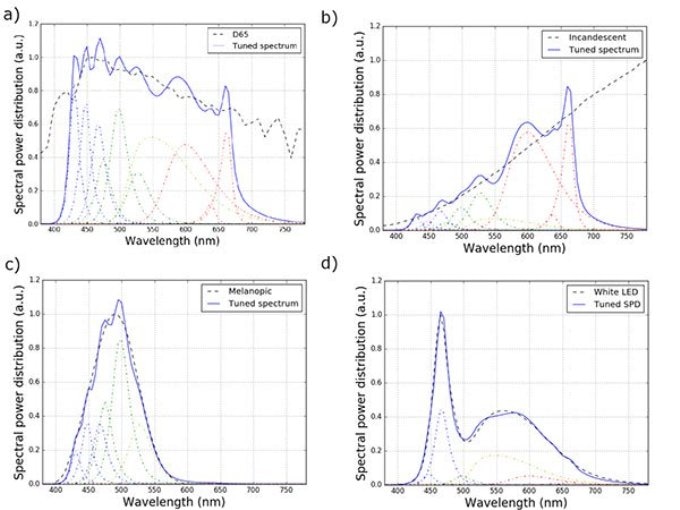Apr 1 2019
An article titled, “Arbitrary spectral matching using multi-LED lighting systems” has been recently reported in the SPIE journal Optical Engineering, highlighting a significant development in lighting science and technology.
 (Image credit: Aleix Llenas Catalonia Institute for Energy Research, Jardins de les Dones de Negre 1 PL2, Sant Adrià de Besòs, B (Spain) Josep Carreras Ledmotive Technologies, Jardins de les Dones de Negre 1 PL2, Sant Adrià de Besòs, Barcelona (Spain))
(Image credit: Aleix Llenas Catalonia Institute for Energy Research, Jardins de les Dones de Negre 1 PL2, Sant Adrià de Besòs, B (Spain) Josep Carreras Ledmotive Technologies, Jardins de les Dones de Negre 1 PL2, Sant Adrià de Besòs, Barcelona (Spain))
The investigators have reported in their paper a two-pronged method to measure as well as self-tune the spectral power distributions, or SPDs, of LED lighting systems. Their novel methodology shows the ability of the system to maintain stability and consistency over a long period of time.
Solid State Lighting, or SSL for short, can be used for improving humans’ sleep patterns, vision, and overall wellbeing. The advantages of SSL can be clearly seen across their extensive applications in offices, residences, and even across commercial and industrial sectors, including the continuous advancement of applications in museum lighting, transportation, communication, agriculture, medicine, and imaging. A few of these applications need highly accurate light spectra that do not create optical power shifts or variations in color over time.
Two challenges have been addressed in the open-access paper—how to prevent age-based deterioration and temperature changes from affecting the color, consistency, and strength of light emission, and also offer an internal, dependable, self-monitoring approach.
Using a high spectral fidelity and fast-computation algorithm, the authors established the channel weights of an SPD of interest; an internal microprocessor—in tandem with that technique—offers a closed-loop control system that not only tracks but also rectifies the spectral output, offsetting shifts caused by LED wear and tear, or temperature variations. Furthermore, the application of a common framework for multi-channel SSL systems guarantees the universal relevance of the authors’ findings across varied lighting technologies.
According to Daniel A. LeMaster, Optical Engineering Associate Editor, SPIE Senior Member, and U.S. Air Force Research Laboratory Technical Advisor, the study demonstrates substantial developments in terms of lighting technologies.
“This method to monitor and quickly compensate for the colorimetric issues that arise from junction heating and LED aging will be of great utility in the global LED lighting market.”
Aleix Llenas from the Catalonia Institute for Energy Research (IREC) and Ledmotive Technologies, Spain; and Josep Carreras from Ledmotive Technologies, are the authors of the article.
Michael T. Eismann is the editor-in-chief of Optical Engineering. He is also an SPIE Fellow and senior scientist at the U.S. Air Force Research Lab. The journal is published digitally and in print by SPIE in the SPIE Digital Library, which contains over 500,000 publications from SPIE journals, books, and proceedings, with about 18,000 latest research papers added every year.